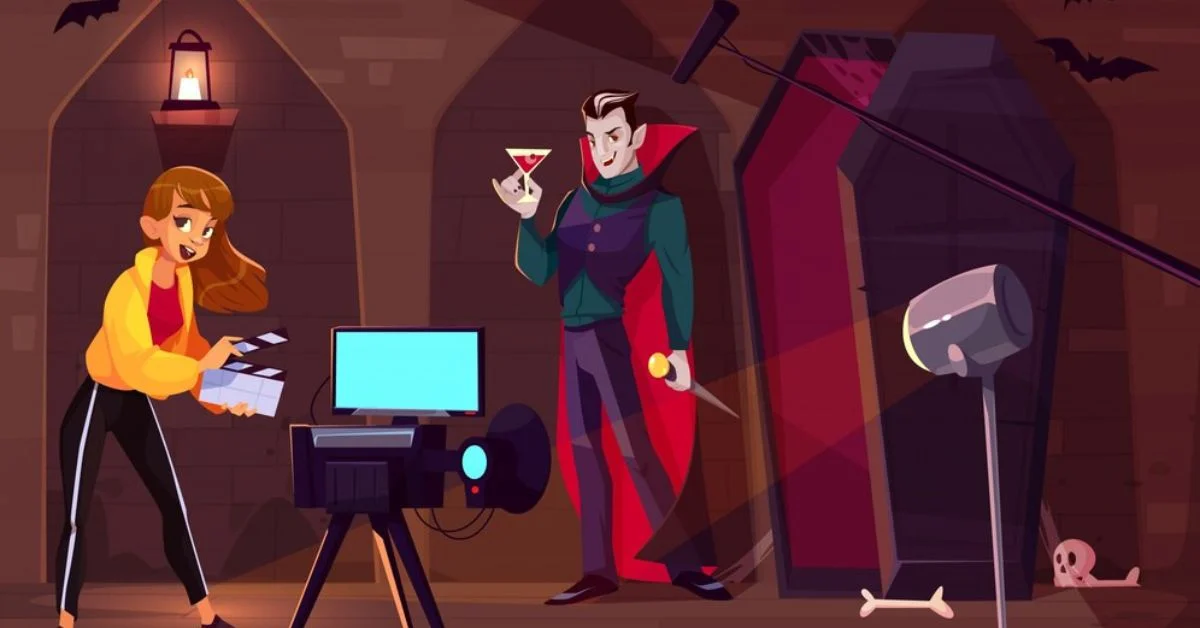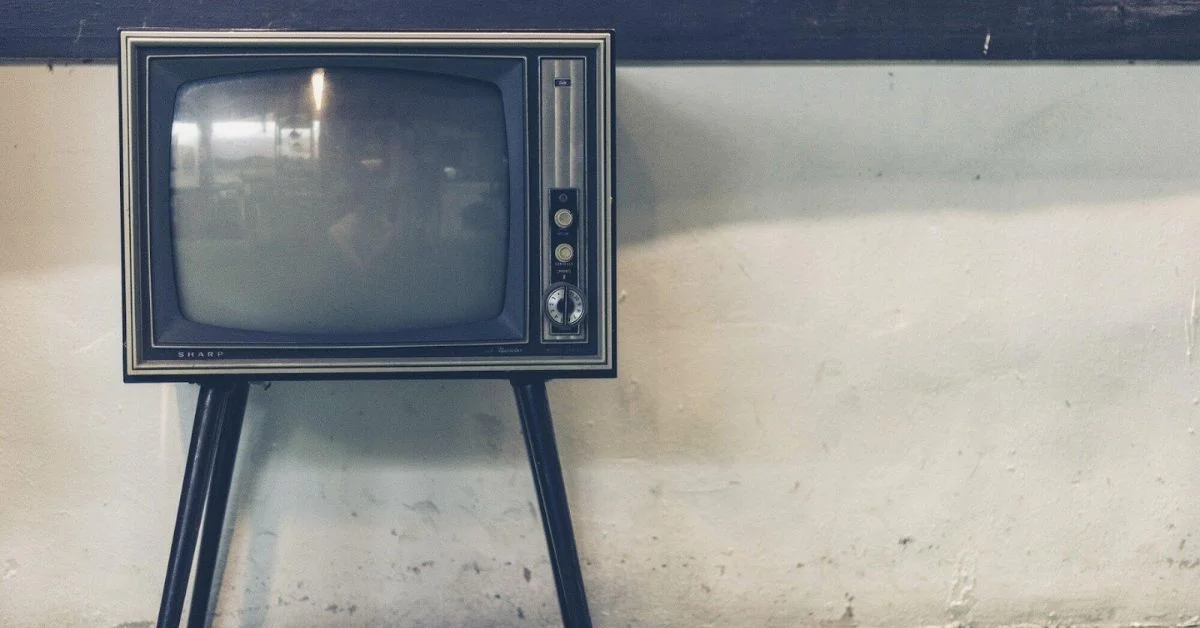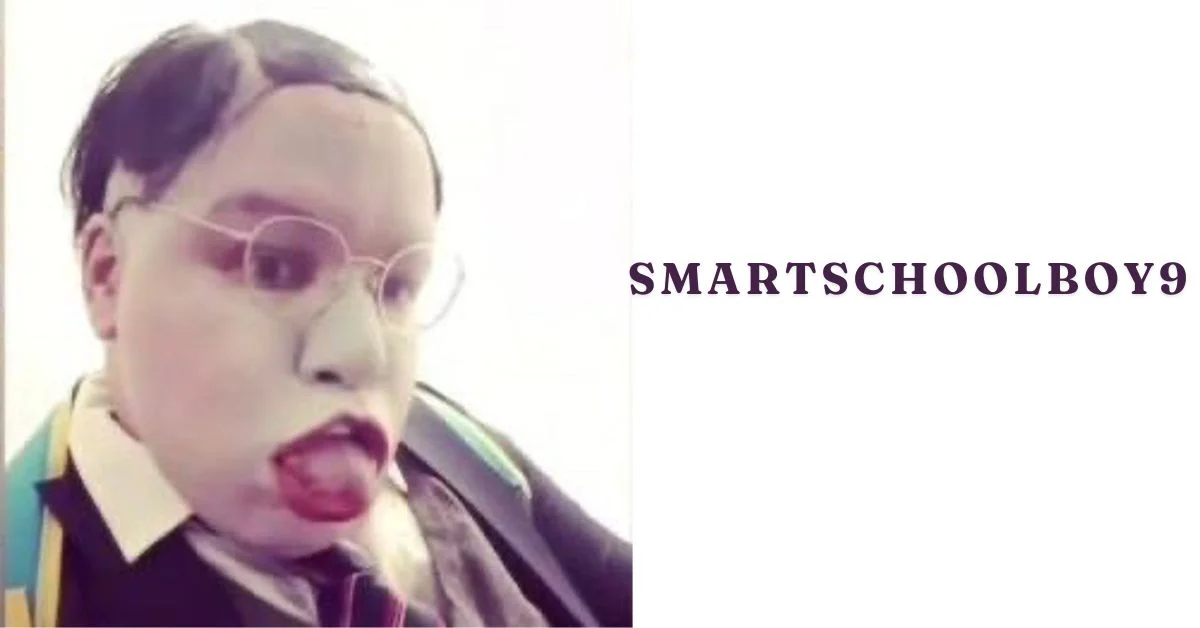ENTERTAINMENT
Eyes on the Frame: Window Voyeurism in Hitchcock’s Craft

Introduction
Alfred Hitchcock, the iconic filmmaker renowned for his mastery of suspense, intricately wove a web of intrigue through his cinematic lens. Among his arsenal of techniques, one often overlooked yet profoundly impactful element is the use of windows. These transparent barriers offer more than just a view; they serve as portals into the characters’ inner worlds, inviting audiences to become unwitting witnesses to their most intimate moments. In this article, we delve into the concept of window voyeurism in Hitchcock’s craft, exploring its symbolism, psychological depth, and enduring impact on both filmmaking and audience perception. Join us as we peer through the window and unravel the mysteries hidden within Hitchcock’s frames.
Introduction to Window Voyeurism
Definition and Origin
Window voyeurism, as depicted in Hitchcock’s films, involves the act of observing characters through windows without their knowledge. This voyeuristic perspective allows the audience to become unwitting witnesses to intimate moments, heightening suspense and tension.
The Role of Windows in Hitchcock’s Films
Symbolism and Themes
In Hitchcock’s cinematic universe, windows symbolize various themes, including confinement, isolation, and the duality of human nature. They serve as visual metaphors for the characters’ inner turmoil and external threats.
ALSO READ: CINEMATIC WEAVES: EXPLORING CINDOVIES
Psychological Depth in Hitchcock’s Use of Windows
Exploration of Characters
Through the strategic placement of characters within the frame, Hitchcock delves into their psyche, revealing hidden desires, fears, and motivations. The voyeuristic gaze penetrates the façade of normalcy, exposing the complexities of human nature.
Techniques Employed by Hitchcock
Camera Angles and Perspectives
Hitchcock employs a variety of camera angles and perspectives to manipulate the viewer’s perception. Low-angle shots create a sense of vulnerability, while high-angle shots evoke feelings of superiority or surveillance.
Lighting and Shadows
The interplay of light and shadow adds depth and texture to Hitchcock’s scenes, accentuating the tension between visibility and obscurity. Shadows obscure the characters’ intentions, leaving the audience guessing their true motives.
Impact on Audience Perception
Creating Suspense and Tension
By inviting the audience to spy on the characters, Hitchcock creates a sense of unease and anticipation. The voyeuristic perspective blurs the line between observer and participant, immersing the viewer in the unfolding drama.
Engaging the Viewer
Window voyeurism captivates the viewer’s attention, encouraging them to decipher hidden clues and unravel the mysteries lurking behind closed doors. It fosters an interactive viewing experience, wherein the audience becomes active participants in the storytelling process.
ALSO READ: LETFLIX: YOUR GATEWAY TO A WORLD OF MOVIES
Ethical and Moral Considerations
Privacy vs. Entertainment
The ethical implications of voyeurism raise questions about privacy invasion and consent. While Hitchcock’s use of window voyeurism is undeniably compelling from a narrative standpoint, it also raises concerns about the exploitation of personal boundaries for entertainment.
Contemporary Relevance
Influence on Modern Filmmaking
Hitchcock’s innovative techniques continue to inspire filmmakers today, shaping the visual language of suspense and thriller genres. The legacy of window voyeurism lives on in contemporary cinema, reaffirming its enduring impact on storytelling.
Conclusion
Alfred Hitchcock’s mastery of window voyeurism transcends mere cinematic technique; it serves as a window into the human psyche itself. Through the lens of voyeurism, Hitchcock exposes the frailty of human nature and the tension between revelation and concealment.
ALSO READ: GLOBAL DRAMAS UNVEILED: AIYIFAN TV’S SHOWCASE
FAQs
How did Hitchcock use windows to create suspense?
Hitchcock employed strategic camera angles and lighting techniques to heighten tension and anticipation, drawing viewers into the characters’ world.
What themes are associated with window voyeurism in Hitchcock’s films?
Windows in Hitchcock’s films symbolize confinement, isolation, and the duality of human nature, serving as visual metaphors for the characters’ inner turmoil.
Is window voyeurism ethical in filmmaking?
While window voyeurism can be an effective narrative device, it raises ethical concerns about privacy invasion and consent, prompting discussions about the boundaries of entertainment.
How does window voyeurism engage the audience?
Window voyeurism captivates the audience by inviting them to participate in the storytelling process, encouraging them to decipher hidden clues and unravel mysteries.
What is Hitchcock’s legacy in modern filmmaking?
Hitchcock’s innovative techniques, including window voyeurism, continue to influence filmmakers today, shaping the visual language of suspense and thriller genres.
ENTERTAINMENT
From I Love Lucy to Friends: The Ultimate Classic Reruns TV Schedule for Fans

Who doesn’t love curling up on the couch for a marathon of their all-time favorite shows?
Whether it’s the comedic genius of “I Love Lucy” or the unbreakable friendships in “Friends,” these shows have a special place in our hearts. That’s why we’ve put together the ultimate classic reruns TV schedule just for fans like you.
Get ready to relive the laughter, tears, and unforgettable moments with a lineup designed to bring the golden age of television right into your living room.
I Love Lucy
“I Love Lucy” is a show that makes everyone laugh. It’s about Lucy Ricardo and her adventures, often getting into funny situations. Her husband, Ricky, and their friends, Fred and Ethel, are always part of the fun.
Every episode is full of jokes and funny moments. Lucy tries new ideas to become famous or to help Ricky in his nightclub acts, but things don’t always go as planned. Watching Lucy’s plans unfold is a big part of why people love the show so much.
Friends
“Friends” is a show about six friends living in New York City. They spend a lot of time in their favorite coffee shop, talking about their lives and helping each other. The show makes people laugh and sometimes cry.
The friends face many challenges, but they always find ways to have fun together. Their friendship makes every problem seem smaller. If you’re looking to dive deeper into the world of “Friends” and discover behind-the-scenes insights, visit Web TV Wire for exclusive content and interviews.
Seinfeld
“Seinfeld” is a show about nothing and everything at the same time. It follows the life of Jerry Seinfeld and his friends in New York City. They get into all sorts of everyday situations, making the ordinary seem funny.
The humor in “Seinfeld” comes from the small things, like waiting for a table at a restaurant or dealing with difficult neighbors. The characters, including Elaine, George, and Kramer, each bring their unique perspective to the show. This makes “Seinfeld” a classic comedy that people enjoy watching.
The Simpsons
“The Simpsons” is an animated series that features the Simpson family living in the town of Springfield. The family includes Homer, his wife Marge, and their three children, Bart, Lisa, and Maggie. The show explores their daily lives and the quirky residents of their town.
Each episode is filled with humor and a look at American culture through the eyes of this unique family. Homer’s antics, often driven by his simple-mindedness, contrast with Lisa’s intelligence and Bart’s rebellious nature. The series has been on the air for decades, making it a beloved part of television history.
Cheers
“Cheers” is a sitcom set in a Boston bar named Cheers, where everybody knows your name. The show focuses on the lives of the bar’s staff and regular customers. The bartender, Sam Malone, a former baseball player, leads the group with his wit and charm.
The series highlights the importance of community and friendship through the interactions at Cheers. Each episode brings new dilemmas and laughter, as the characters share their stories and support each other through life’s ups and downs. It’s a straightforward depiction of the bar as a central meeting point for people from different walks of life.
The Mary Tyler Moore Show
“The Mary Tyler Moore Show” is about Mary Richards, a young woman who works as a news producer in Minneapolis. She is independent and focuses on her career while navigating life’s challenges. The show is notable for its portrayal of a single woman working in the television industry.
Throughout the series, viewers see Mary dealing with her work life, her friendships, and everything in between. The show mixes humor with more serious topics, showing how Mary handles various situations at work and home. It’s praised for its strong characters and has become an icon of American television, perfect for the TVLand schedule.
MAS*H
“MAS*H” is a TV show that takes place during the Korean War. It follows the doctors and staff of a mobile army surgical hospital as they work to save the lives of injured soldiers. The show blends humor and serious topics, showing how the characters cope with the challenges of war.
The main characters include Hawkeye, BJ, and the strict but fair Colonel Potter. They all deal with the realities of war and the need for laughter amidst adversity. Each episode explores the pressure of surgery and the importance of friendship and humanity in difficult times.
The Andy Griffith Show
“The Andy Griffith Show” is a series that showcases life in the small, fictional town of Mayberry, as seen through the eyes of Sheriff Andy Taylor. Andy, a widowed father, navigates the day-to-day challenges of raising his son Opie with the help of his Aunt Bee. The show focuses on Andy’s gentle approach to law enforcement and the various interactions with the town’s quirky inhabitants.
Each episode presents a new adventure or challenge that Andy and Opie face together, often teaching a lesson about kindness, honesty, and respect. The residents of Mayberry, including Deputy Barney Fife, offer a variety of humorous and heartwarming moments. The series is celebrated for its depiction of wholesome family values and community spirit.
The Twilight Zone
“The Twilight Zone” is a television series that blends science fiction with horror and fantasy. Each episode introduces audiences to a new story, exploring themes of humanity, society, and the unknown. The show is known for its unexpected twists and often presents a moral or philosophical message.
Created by Rod Serling, “The Twilight Zone” offers a unique narrative approach, presenting standalone episodes with different characters and settings. The series has achieved critical acclaim for its storytelling, innovative concepts, and Serling’s powerful introductions. It remains influential in the genre of speculative fiction, inspiring countless other shows and films.
Step Into Nostalgia With Curated Classic Reruns TV Schedule!
Our curated classic reruns TV schedule is more than just a list; it’s a time machine that transports you to the moments that define television greatness. With each show, you’re invited to laugh, cry, and ponder alongside timeless characters and stories.
This TV land classic schedule isn’t just about revisiting the past; it’s about rekindling the joys and lessons that these iconic series continue to offer. Tune in, get cozy, and let the magic of classic reruns fill your home and heart.
We hope this article was helpful to you. If you enjoyed it, be sure to check out our blog for more valuable information and resources.
ENTERTAINMENT
Funny Puzzles: Delete & Erase Things to Make the Coolest Happen!

Playing This Best Fun Casual Game to Kill Your Time!
Are you still worried about not being able to find a casual game that can kill your time and is interesting enough? It’s very easy to get bored on your way to and from work, or anywhere you have to stand or sit for an extended period. You want to kill some time, but you have long been tired of all kinds of boring games. Now, you want to find a game that is simple enough to play and doesn’t require too much effort.
At the same time, it should be interesting enough to relieve your stress, relax, and preferably make you laugh and feel satisfied. Enter DOP Puzzle: Delete One Part now to relax your brain completely! Just keep swiping to erase anything that obscures the original appearance of a person or thing. Your goal is to cause changes and twists in events.

Our Gameplay is Easy to Get Started and will Keep You Laughing
The gameplay of Delete One Part is very simple, you just need to keep dragging the mouse or swiping the screen with your finger to “delete” something. However, as an interesting puzzle game, our game also requires you to use your brain. For example, a cactus and a balloon fell in love on one level. They wanted to hug each other but were worried that the cactus’ thorns might pop the balloon.
Now, it’s time for you to save their love! Please “delete” all the thorns on the cactus, so that he and Miss Balloon, the sweet couple, can hug freely! For another example, on another level, a rock singer’s hair is too long. Therefore, it is difficult for us to see his facial features and expressions. His sight is also blocked by his hair, so he cannot see the road and people in front of him!
You need to do him a little favor and “delete” his excessively long hair. It’s time to let his bald head, which reflects the sparkle, be fully exposed to the air. As a thank you, the rock singer who breathed the fresh air again will sing you a rock song that will make your adrenaline rush to the limit!

The Funny and Innovative Level Designs Bring You Joy in Solving Puzzles
Everything we design for this game is to enhance your gaming experience. We understand clearly that you play our games to relax and have fun. At the same time, we know that players don’t like levels that are too repetitive and boring, so each of our levels is interesting enough for you.The mission of the game is simple and clear: “delete” those things that need to be “deleted”, and then wait for unexpected and interesting events to happen!
However, our game also sets some “traps” for you. If you erase things without any thinking at all, the story may go in the opposite direction and your game may fail. We have carefully prepared dozens of game levels for you, all with different designs. During the whole process of playing DOP Puzzle, you can freely “delete” things as well as your bad mood.
If You Want to Play More Casual Puzzle Games, Enter Our Website Now! The fun in the gaming world is endless. If you are still not satisfied after playing this game, we highly recommend that you enter our website at any time to play more interesting games. There are thousands of carefully selected games on our website, such as puzzle games, casual games, and other fun games that can give you joy like this game. If you are a fan of 3D games, FPS games, or other hot games that are more exciting and can make your adrenaline surge, we can also meet your needs. So click on free games now and choose your favorite among thousands of free elite games!
ENTERTAINMENT
A Game Changed Everything: Jumanji’s Lasting Effect on Pop Culture

Since its 1995 debut, Jumanji has turned into a touchstone of Hollywood culture. It’s adored by fans of all ages for mixing thrills, fantasy, and laughs. You can see its influence everywhere: think online slots that echo the film’s adventurous vibe or recent movies that borrow its wild idea of a board game coming to life. Jumanji was a trailblazer in special effects and animatronics, raising the bar for how stories look on screen. Its blend of excitement, peril, and heartfelt moments became a go-to formula for other movies to follow.
From Board Game to Blockbuster
Not many movies capture the magic of childhood games and the excitement of adventure as well as Jumanji. The 1995 film, starring Robin Williams, started with a basic idea: a board game that turns its hazards into reality, and it turned into a cultural hit. The series even continued with new flicks like “Jumanji, Welcome to the Jungle.” This reboot refreshed the story for today’s fans while also nodding to Robin Williams’ unforgettable role.
The impact of Jumanji goes way beyond its follow-up films, touching modern movies and reshaping our perspective on gaming. Jumanji has even made its way into online slot games, and you can click here to read the full report. No deposits even means you can revisit the game in fresh way without any risk. In this way, the movie connects the past and present games, guaranteeing Jumanji’s continuing relevance in pop culture.
While Jumanji wasn’t the pioneer in showing board games in films, it struck a chord with its viewers. Its cutting-edge special effects at the time seamlessly combined fantasy with real-world stakes, making the threats of Jumanji seem genuine. Robin Williams’s compelling portrayal of someone stuck in the game for years added both laughs and emotion to the mix, giving us a hero we wanted to cheer on. The movie’s popularity showed that films incorporating games can be exciting, humorous, and often touch our hearts.
A Cultural Phenomenon
Jumanji made a big splash in the gaming world. Its main idea of a game coming into the real world sparked ideas in game creators, leading to games such as Rampage and the lasting hit Pokemon Go. The film pointed out how video games could tell stories, setting the stage for future games that focus on plot. It proved that games are more than just fun. They can deeply engage their players, albeit maybe with fewer stampedes. The movie Jumanji went beyond just being a film. It led to the creation of an animated show, multiple video games, and tons of merchandise.
Jumanji wasn’t your typical adventure flick. It morphed into a cultural icon that people made jokes about, created memes from, and referenced in parodies. The famous images from the movie including the scary drum sounds and the mysterious game board became well-known in popular culture. Sayings from the movie like “What year is it?” and simply “Jumanji!” started getting used in regular conversation. The impact of Jumanji on newer films remains clear as day as well. The idea of an enchanted game making real-life chaotic has shown up in several movies since then, including Zathura (2005) and Escape Room (2019).
Jumanji’s Legacy of Adventure
Jumanji holds a special place in many people’s hearts so check it out on your movie streaming platform of choice. More than just a good story, the movie shows us how vital adventure, finding yourself, and working together are. These themes still strike a chord with today’s viewers. At the heart of Jumanji is a timeless idea, imagination has incredible strength and adventure keeps things exciting. The film highlights the life-changing power of games, whether they’re make-believe or real. With its combination of real-life and fantasy worlds, Jumanji continues to captivate new audiences’ attention. What makes the film so beloved is its talent for whisking viewers away to an enchanting world It reminds us that even simple things can hide amazing adventures.

 ENTERTAINMENT1 week ago
ENTERTAINMENT1 week agoExploring the Kristen Archives: A Treasure Trove of Erotica and More

 TECHNOLOGY4 months ago
TECHNOLOGY4 months agoBlog Arcy Art: Where Architecture Meets Art

 LIFESTYLE1 week ago
LIFESTYLE1 week agoWho Is Sandra Orlow?

 LIFESTYLE4 months ago
LIFESTYLE4 months agoThe Disciplinary Wives Club: Spanking for Love, Not Punishment

 ENTERTAINMENT5 days ago
ENTERTAINMENT5 days agoKiss KH: The Streaming Platform Redefining Digital Engagement and Cultural Currents

 GENERAL4 months ago
GENERAL4 months agoWhat are stories of male chastity? A Comprehensive Guide

 ENTERTAINMENT4 weeks ago
ENTERTAINMENT4 weeks agoMonkeyGG2: Your Personal Gaming Hub

 GENERAL5 months ago
GENERAL5 months agoSmartSchoolBoy9: The Rise of a Viral Chasing Kid Sensation












